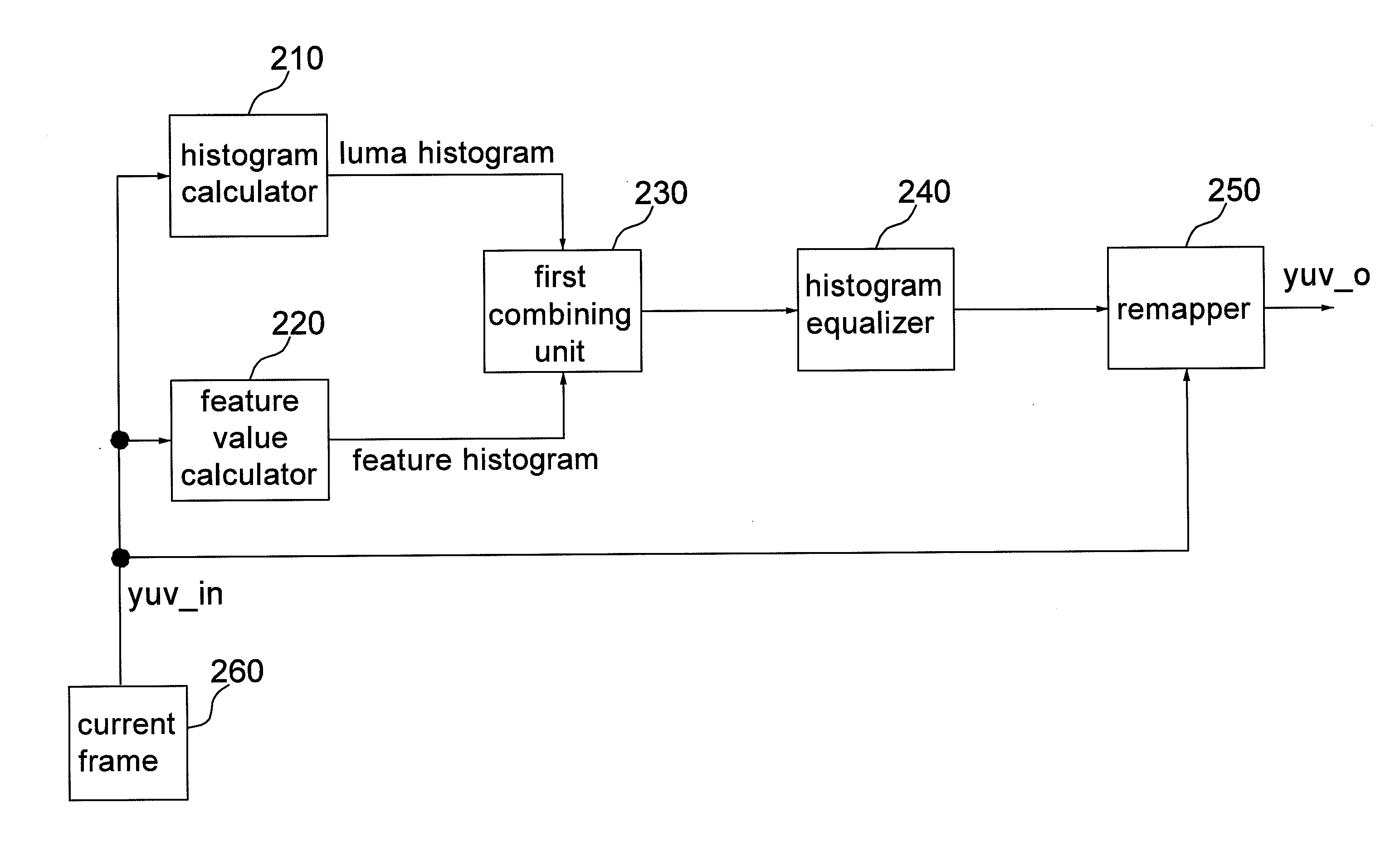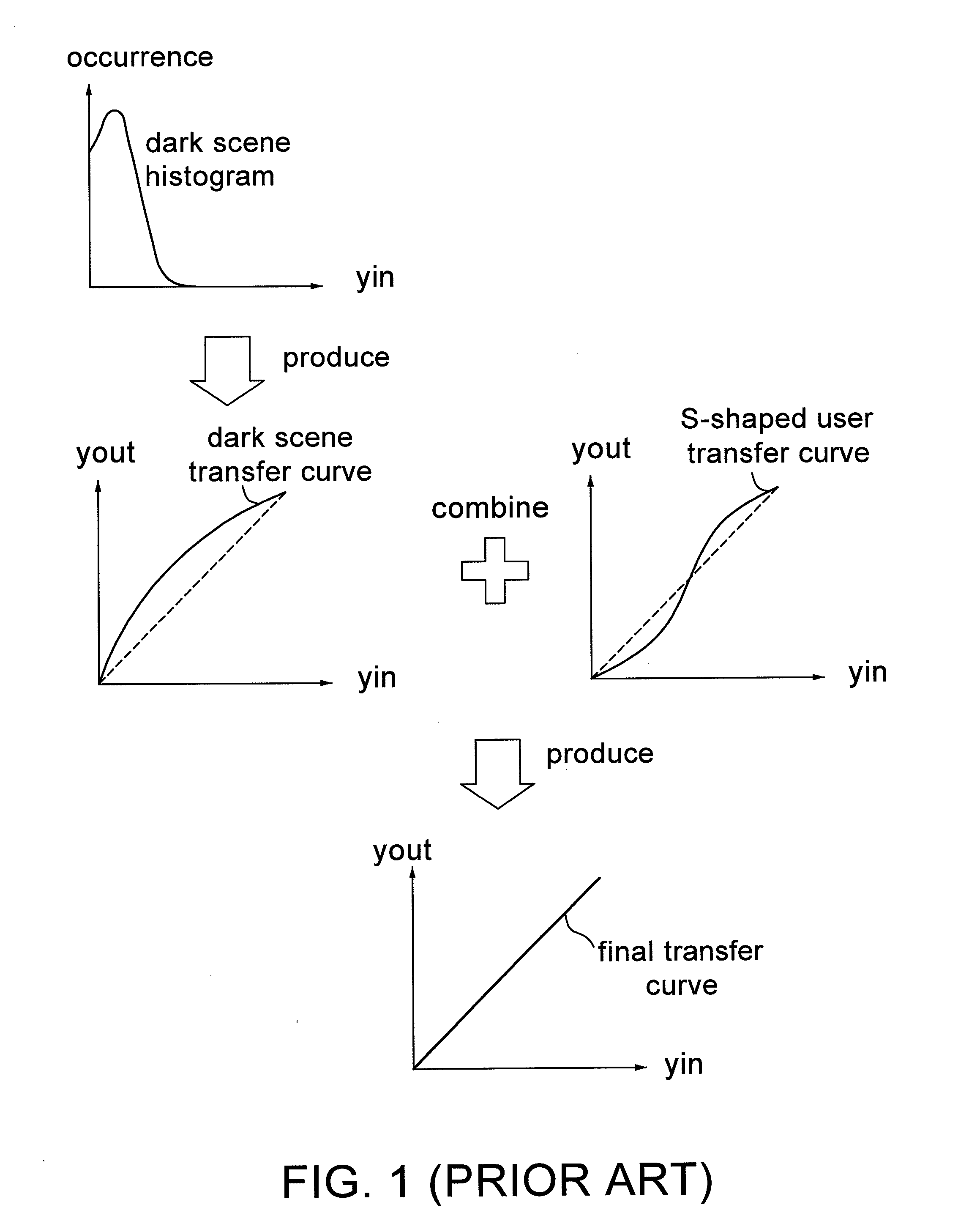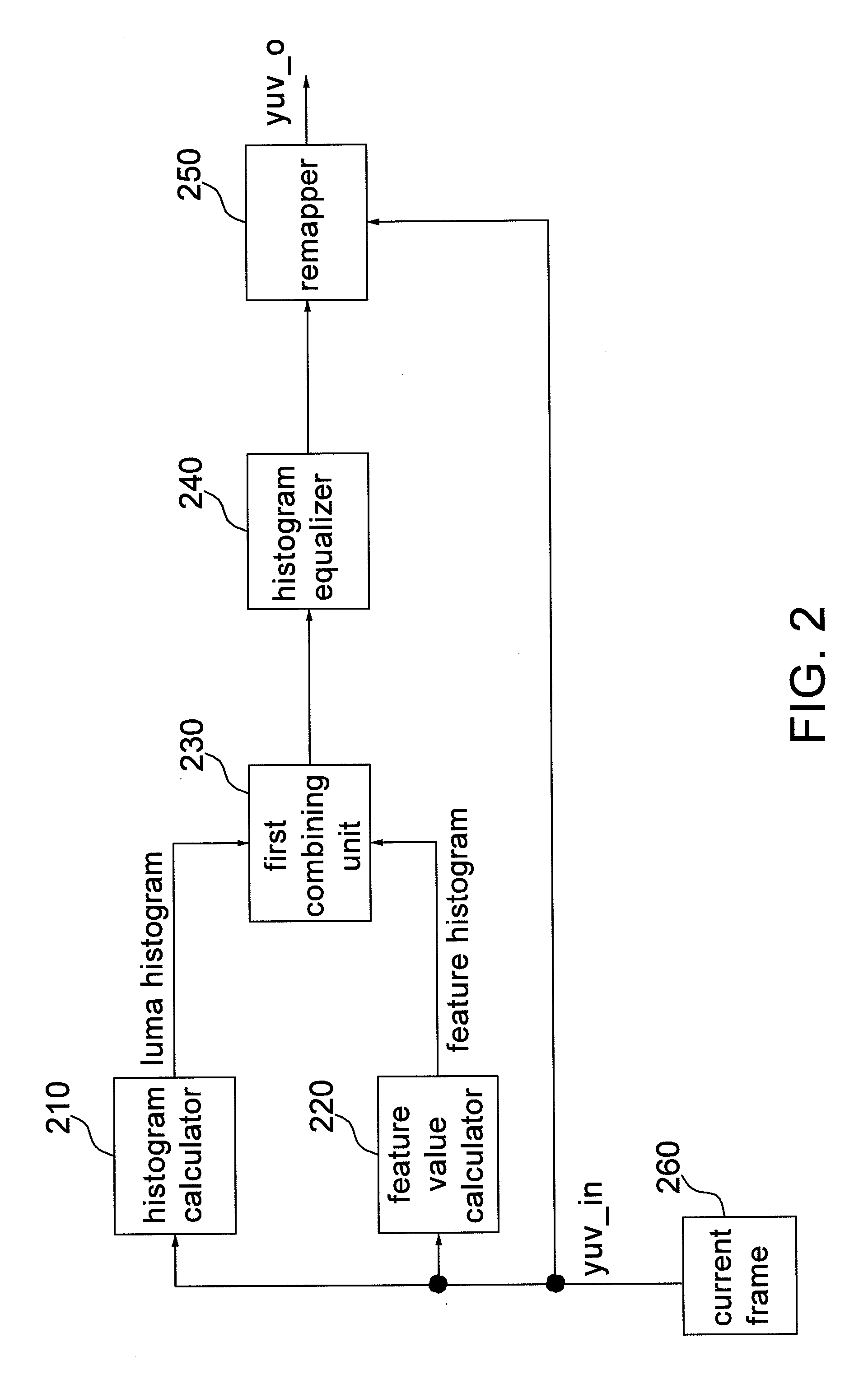Apparatus and method for feature-based dynamic contrast enhancement
a dynamic contrast enhancement and feature-based technology, applied in image enhancement, television systems, instruments, etc., can solve the problems of high hardware cost, huge amount of computation, vain attempt by conventional dynamic contrast enhancement apparatus to perform contrast enhancement for dark scene images, etc., to achieve enhanced image detail features, effective suppression of background noise, and hardware cost
- Summary
- Abstract
- Description
- Claims
- Application Information
AI Technical Summary
Benefits of technology
Problems solved by technology
Method used
Image
Examples
first embodiment
[0033]FIG. 2 is a block diagram of a feature-based contrast enhancement apparatus according to the invention. Referring to FIG. 2, a feature-based contrast enhancement apparatus 200 of the invention comprises a histogram calculator 210, a feature value calculator 220, a first combining unit 230, a histogram equalizer 240, and a remapper 250. Referring to FIG. 2, a current frame 260 includes a plurality of pixels and each pixel (yuv_in) includes a luma component and a chroma component. After receiving the luma components (or data) of all the pixels of the current frame 260, the histogram calculator 210 calculates a luma histogram for the current frame 260.
[0034]FIG. 3A is a diagram showing a target pixel and its neighboring pixels. Referring to FIG. 3A, the simplest method to determine the differences or features between the target pixel b and its neighboring pixels is to perform high-pass filtering on the pixels in the neighborhood of the target pixel b to quantify the differences b...
second embodiment
[0050]In the second embodiment, after receiving the luma histogram from the histogram calculator 210, the select unit 610 calculates the average luma value of all the pixels of the current frame 260 according to a dark scene transfer curve C1 and a S-shaped user transfer curve C2 (as the example in FIG. 1 but the invention is not limited to the example), and then decides whether the current frame 260 is a dark scene image according to the total number of pixels contained in at least one pre-determined bin at dark levels. If the current frame 260 is a dark scene image, the select unit 610 outputs the dark scene transfer curve C1 as an adjusted transfer curve; otherwise, the select unit 610 outputs the S-shaped user transfer curve C2 as the adjusted transfer curve. In an embodiment, in the select unit 610, the following program codes are provided to decide whether the current frame 260 is a dark scene image and output one of the dark scene transfer curve C1 and the S-shaped user trans...
third embodiment
[0054]In the third embodiment, the region luma calculator 710 and the luma offset calculator 720 are provided to increase the brightness of dark level pixels to allow users to watch the dark level images more clearly. The functions of the region luma calculator 710 and the luma offset calculator 720 are optional to the invention, depending upon application needs.
[0055]FIG. 8A shows a third relation curve between an original luma value and a luma offset. Referring to FIG. 8A, a section of the third relation curve having several darkest luma levels (i.e., the left-hand side of the third relation curve) generally has a lower signal-to-noise ratio (SNR), so it is difficult to distinguish very low luma level signals from noises. Accordingly, it is not necessary to increase the brightness of the darkest section of the third relation curve. Besides, increasing the brightness of the darkest section of the third relation curve will reduce the contrast of the whole image. In practice, it shou...
PUM
 Login to View More
Login to View More Abstract
Description
Claims
Application Information
 Login to View More
Login to View More - R&D
- Intellectual Property
- Life Sciences
- Materials
- Tech Scout
- Unparalleled Data Quality
- Higher Quality Content
- 60% Fewer Hallucinations
Browse by: Latest US Patents, China's latest patents, Technical Efficacy Thesaurus, Application Domain, Technology Topic, Popular Technical Reports.
© 2025 PatSnap. All rights reserved.Legal|Privacy policy|Modern Slavery Act Transparency Statement|Sitemap|About US| Contact US: help@patsnap.com



